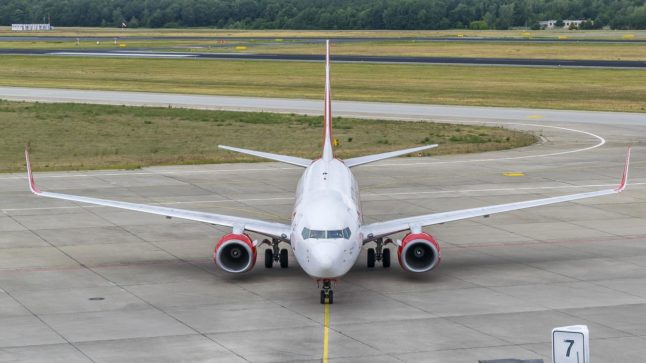Passengers with early flights on Tuesday, March 7th, already had to reschedule or cancel their trips if they were with Austrian carrier and Lufthansa subsidiary, Austrian Airlines (AUA), as The Local reported. And the disruption is set to continue during the day and on March 8th.
A staff meeting with flight crews, which was called after shelved collective bargaining negotiations on inflation compensation, was the reason why flights were affected in the early morning. Workers met at Vienna International Airport in Schwechat on Tuesday and the airline had to cancel 34 flights to 17 destinations.
Warning strike announced
However, during the union members meeting, participants decided on a warning strike lasting until 2:30 pm, which will affect flights for the entire day on March 7th and early on March 8th.
At the staff gathering, it was unanimously decided that the meeting would turn into a warning strike, Yvonne Heuber of the Vida trade union told APA.
The company has not announced the detailed impacts of the strike yet. However, passengers can check on the company website for the status of their flights – as well as checking airport sites. In the Vienna International Airport, several AUA flights already show as cancelled, including some on the morning of March 8th.
Around 1,700 passengers were already rebooked on replacement flights. According to the airline, those who booked directly with it were contacted proactively, while passengers who booked with a travel agency should contact the agencies.
READ ALSO: What you need to know before travelling to Austria in spring 2023
To minimise the impact, among other things, employees on “standby” have been called to duty, the AUA press office said. “Austrian Airlines long-haul destinations can be served regularly according to the current status,” the airline announced.
What are my rights if my flight gets cancelled or delayed?
In case of cancellation, you can choose between getting your money back, getting the next available flight, or changing the booking completely for a later date. You are also entitled to assistance free of charge, including refreshments, food, accommodation (if you are rebooked to travel the next day), transport, and communication (two telephone calls, for example).
This is regardless of the reasons for cancellation.
If your flight was delayed, your rights and compensation would depend on the duration of the delay and the flight distance.
You can read more about your rights HERE.
READ ALSO: Train travel in Austria: 6 ways you can save money
Why are workers on strike?
Workers’ representatives informed Austrian Airlines staff that the renegotiations on the collective agreement (KV), the sector deals between unions and company representatives that rule over salary and benefits in Austria, have stalled.
Staff had demanded a renegotiation of the KV after Austrian Airlines posted good results in the third quarter of 2022 at the same time as inflation continued to rise.
The workers haven’t ruled out further strikes in the near future.



 Please whitelist us to continue reading.
Please whitelist us to continue reading.
Member comments